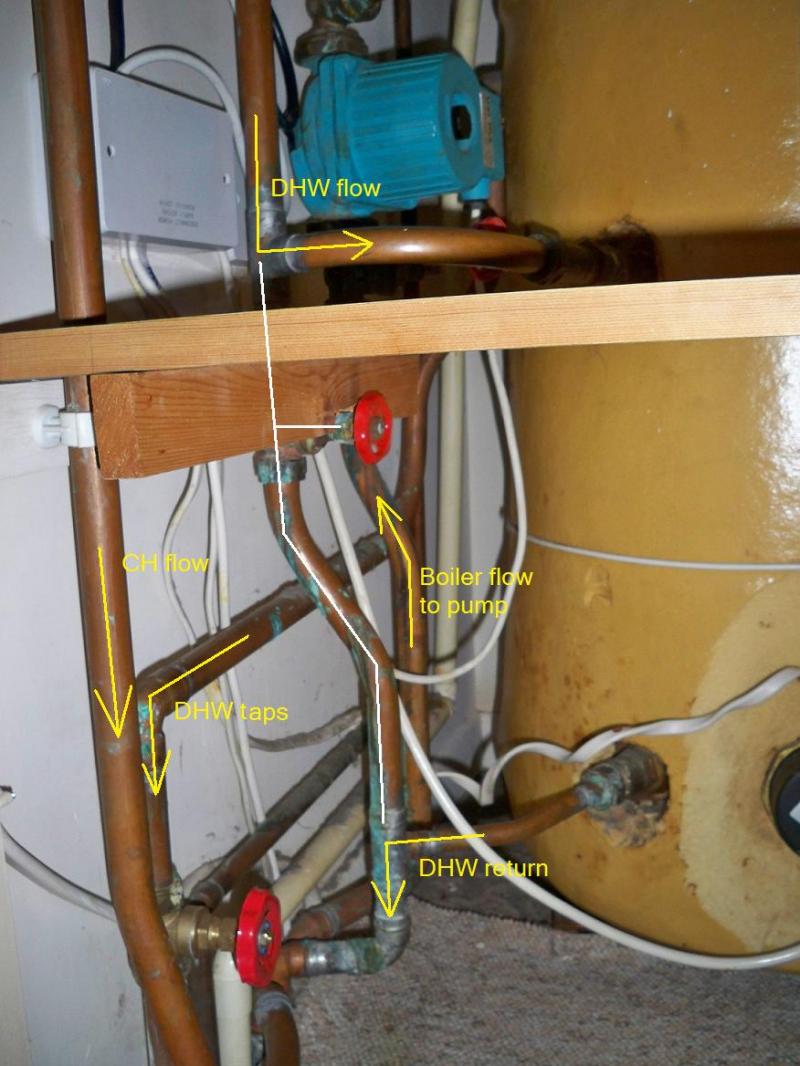EFLI, in terms of the 'just one thought' suggestion I made (goodness knows whether it's the answer!), try a totally electrical analogy ...
Imagine you have a constant-current source (cf CH pump) which gets upset (maybe blows up) if the voltage (cf pressure) across its output rises appreciably above 100V. Imagine that it can be switched to supply one of two loads, one of 90Ω (let's call that 'CH') and the other of 120Ω (let's call that 'DHW'). The actual current supplied by the constant-current source can be 'set', and we have set that at 1A. For the sake of simplicity, ignore the resistance of the wiring.
When switched to CH, all is well, voltage across load (and also across supply, if we're ignoring resistance of wiring) is 90V and everyone's happy. Switch to DHW, then voltage across load (and source) is 120V, and maybe something goes bang.
Now put a 240Ω resistor (let's call it 'Bypass') across the 120Ω DHW load. That's a 'combined' resistance of 80Ω. With the switch in the CH position, it's exactly the same as before - 90V, so all is well (and adding the resistor has obviously changed nothing). With the switch in the DHW position, there is no bang this time, because voltage is only 80V.
As above, I haven't a clue as to whether this was in the mind of the person who installed that plumbing, but if there was a concern that pressures might get too high (and maybe damage pump, or something else) on 'DHW only', there could possibly be some sense in it.
Kind Regards, John


